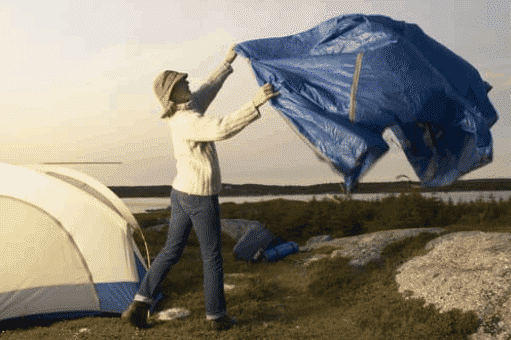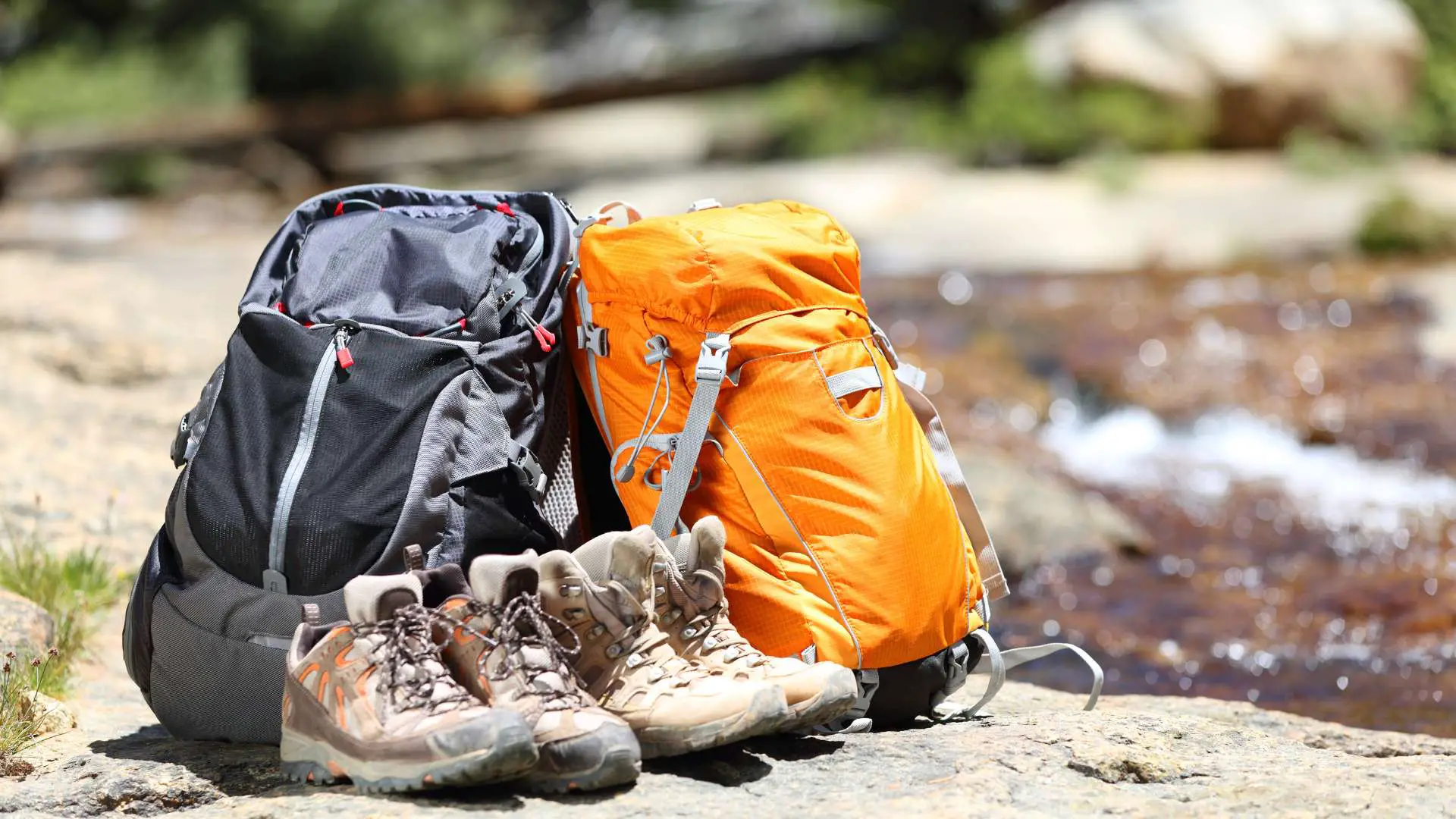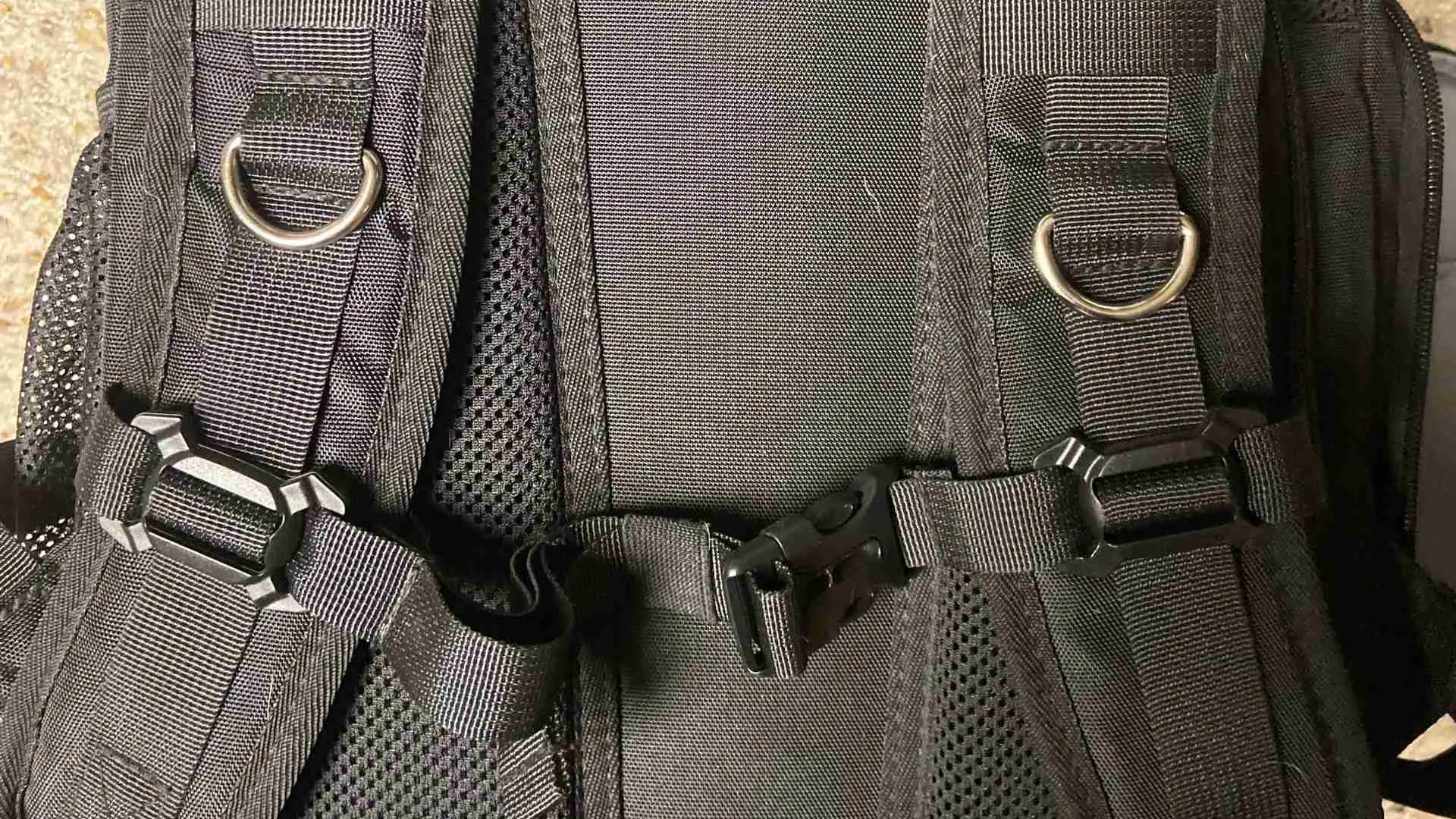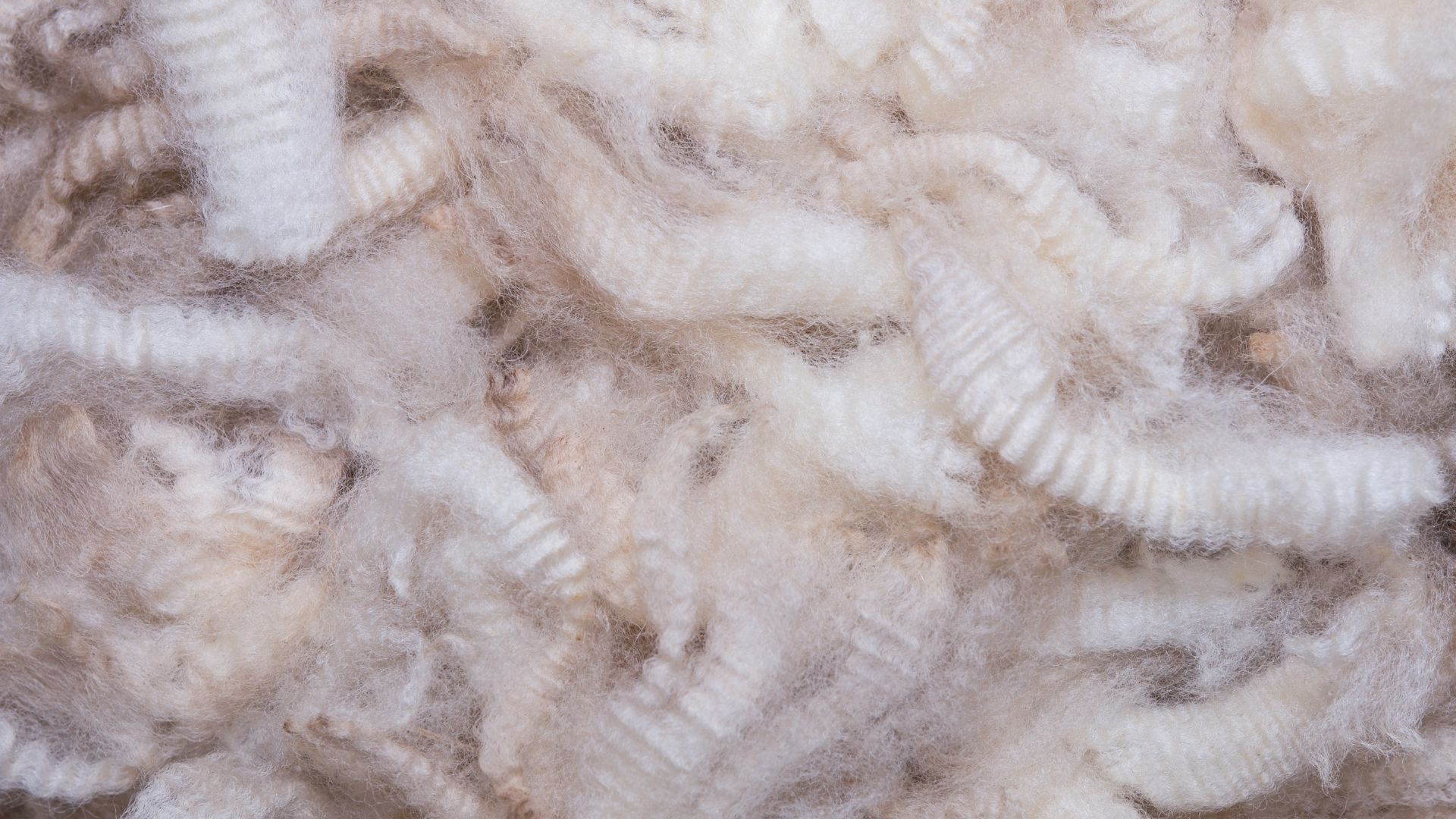I always wondered why people spend so much money tent footprints. Tarps serve the same purpose at a fraction of the price. Is it really worth spending the money on a tent footprint when you can just use a tarp?
Can you use a tarp as a tent footprint? You can use a tarp as a tent footprint, but it needs to be exactly the right size. Most tarps are sold in generic sizes so you will have to cut the tarp down so that it’s slightly smaller than your tent. It’s up to you whether or not the hassle is worth the slight savings over a tent footprint.
I would recommend a tent footprint for most campers, but they aren’t for everybody. You need to take ask yourself whether or not the added weight is worth protecting your tent.
This article explains both the advantages and disadvantages of using a tarp as a tent footprint. Sometimes you might be better off buying a purpose-built ground cloth or ditching it altogether.
Table Of Contents
Why Should I Use a Tarp as a Tent Footprint?
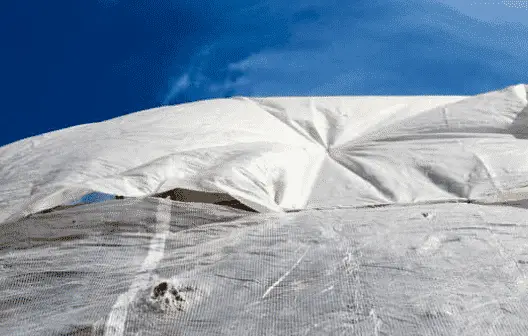
Personally, I almost always use some kind of tent footprint under my tent. I might leave it at home if I’m going for an ultralight setup, but that’s only in rare occasions.
When used as a tent footprint, tarps serve three primary purposes. They protect your tent floor, fight moisture, and keep the bottom of your tarp clean. The added insulation from the cold ground is an added bonus, but it probably won’t be noticeable.
Check out my other post if you would like to learn more about why you should put a tarp down under your tent.
1) Using a Tarp as Tent Footprint Will Protect The Floor
Most of the folks I know remove all the debris from the location they plan on pitching their tent. You don’t want rocks and sticks poking holes in the bottom of your tent. Plus who wants to sleep with a bunch of sticks poking into their back.
So these people think that the purpose of a ground cloth is defeated. For experienced backpackers, this makes sense since you don’t want to carry extra weight. For the average guy backpacking 20 feet away from his truck what’s an extra pound or two to protect your gear(you hauled in a cooler full of beer so what’s one more pound).
Be Careful When Pounding in Tent Stakes
It might seem obvious, but you need to be careful when pounding in your tent stakes. So many people forget about the tent footprint and accidentally pound a stake into the tarp. I hate to say it, but I’ve done this more times than I care to admit.
When pounding in stakes try to keep a 30-45 degree angle into the ground. You might accidentally puncture the tarp if you go in at a steep angle. Since the tarp should be smaller than the tent this shouldn’t be much of a problem.
2) Tarps Help With Waterproofing
It’s crazy how many people use improperly sized tent footprints. They think that bigger tarps offer more protection. After laying down the tarp there’s always a few feet sticking outside the edge of the tent. This is a huge mistake!
Those massive tarps work well in dry weather, but they’re terrible in the rain. There’s just nowhere for the water to go when you use an oversized tarp. This type of setup protects the bottom of the tent from mud, but it actually hurts with waterproofing.
Instead of water slowly draining into the ground it starts to pool up on the tarp. You actually end up with more of a waterproofing issue than before. Refer to the table below and cut down your tarp to size.
| Tent Size | Fold Tarp Down to Size and Use a Grommet Kit to Secure | Alps Mountaineering Tent Footprint Size |
| 2-Person | 6×8 Tarp | 7’2″ x4’8″ Footprint |
| 3-Person | 8×10 Tarp | 7’2″ x 6’2″ Footprint |
| 4-Person | 8×10 Tarp | 8’2″ x 7’2″ Footprint |
| 5-Person | 9×12 Tarp | 9’8″ x 7’8″ Footprint |
| 6-Person | 12×16 Tarp | 9’8″ x 9’8″ Footprint |
The above table should give you a good starting point, but remember that all tents are different. Make sure you check the overall size of your tent and pick up a tarp that you can cut down or tent footprint that’s slightly smaller than your tent.
Customizing a Tarp To Go Under Your Tent
Just sticking a random tarp under your tent isn’t going to help when it comes to rain. It might actually cause additional problems as water pools. For a tarp to actually help with waterproofing it needs to be customized to your tent.
Cut your tarp so that it’s 2-3 inches smaller than the dimensions of your tent. Since the footprint is smaller than the tent you won’t have to worry about water pooling around the edges. This really helps with imperfectly sealed seems.
I also like to use a grommet kit (my favorite) to add grommets to the corner of my tarp. This adds stability to the tarp and gives you a place to secure the corners to your tent.
3) Keeps The Bottom of Your Tent Clean
Rain doesn’t have to ruin your camping trip, but it will add a few challenges. It might not be ideal, but we can all live with a little water here and there. That’s just something you learn to live with on a rainy day.
I don’t care how much you love the outdoors, everybody hates mud. A little bit here and there is fine, but trying to deal with the bottom of a muddy tent is miserable. Literally everything it touches ends up a muddy mess. Tent footprints really shine on those muddy days!
Instead of having a muddy mess of a tent, all the mud stays on the bottom of your tarp. It’s so much easier to hose off a tarp than setup your tent and clean it all off. Just roll up your tent, pack everything up, and you’re good to go. Clean off the tarp and deal with all the mud later.
With that being said you might still need to lightly clean your tent. I highly recommend trying Nikwax Tent and Gear Solarwash. It works really well, adds UV protection, and won’t damage the waterproof coating on your tent.
Bonus: Ground Tarps Add Insulation
Tent footprints will add a little bit of extra insulation between your sleep system and the cold ground. It won’t make a huge difference like an insulated sleeping pad or sleeping bag, but every little bit of insulation helps.
It’s kind of like setting down a sheet for a picnic. You’re basically still sitting on the ground, but you don’t have to deal with moisture and cold grass. Laying down a tarp is just one extra layer of insulation.
Tarps Footprints Don’t Make Sense For Everybody
You really need to consider your backpacking/camping style and gear selection before settling on a tent footprint. Here are a few reasons why you might not want to use a tarp as a tent footprint.
- Tarps Can Be Bulky: I’m sure you’ve tried to fold a tarp at some point in your life. How did that turn out? You probably ended up with a mess! Dedicated tent footprints like the Alps Mountaineering Tent Floor Saver are lightweight, compact, and easy to fold.
- Added Weight: When backpackers switch over to ultralight setups the first thing they ditch is the tent footprint. It’s a lot of added weight without any short term benefits. You just have to clean up sticks/stones and be willing to deal with punctured tent floors every once in a while. A little duct tape is a short term fix until you can get a tent fabric repair kit.
- Tent Price: If you buy the cheapest tent from Walmart or only go camping once in a blue moon ground tarps aren’t really necessary. It doesn’t make sense to spend 10 bucks on a tent to protect a 25 dollar tent.
Where Can I Find Custom Sized Tarps?
Trust me when I say that custom tarps are ridiculously overpriced. The only people that use custom tarps are truckers, landscapers, construction workers, and other commercial businesses.
I tried calling around for quotes and every manufacturer wanted between $30-$70 depending on the size. If you don’t feel like customizing a tarp you’re better off looking for a ground cloth made specifically for your tent.
Harbor Freight Sells Tarps in Crazy Sizes
Head to your local Harbor Freight and check out their ridiculous selection of tarps. Look at their website! They have like 70 different tarp styles to choose from.
You can probably find a precut tarp that’s close enough to the dimensions of your tent. Just remember that you need to go a few inches smaller than the outside edge of the tent so water doesn’t pool.
